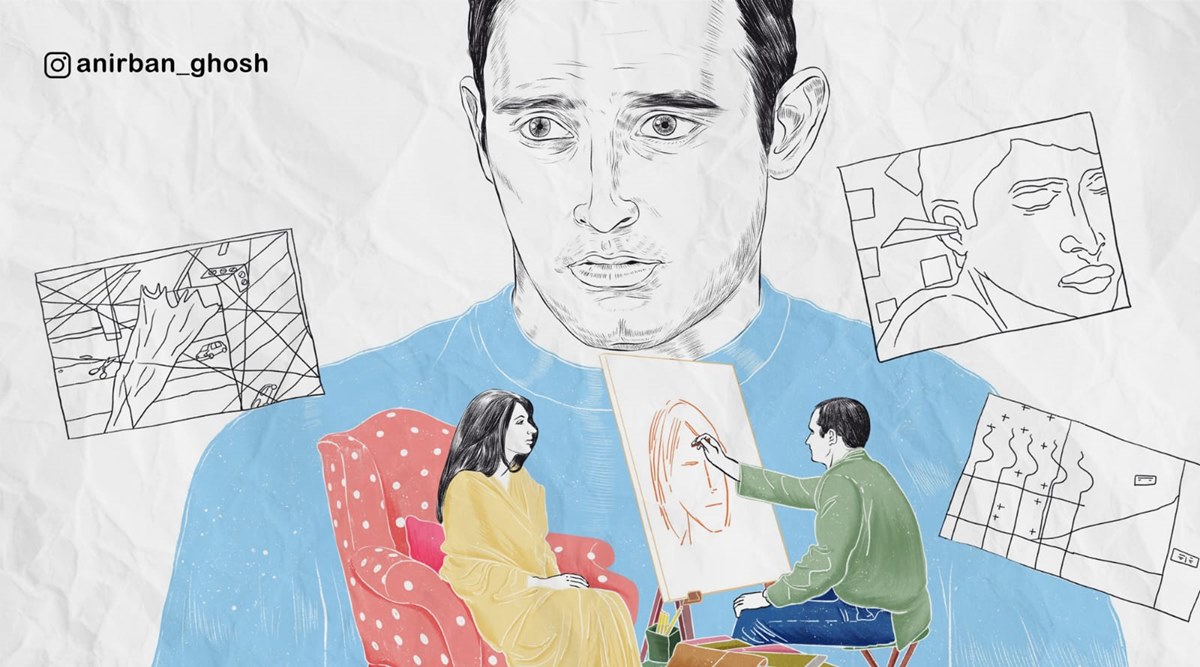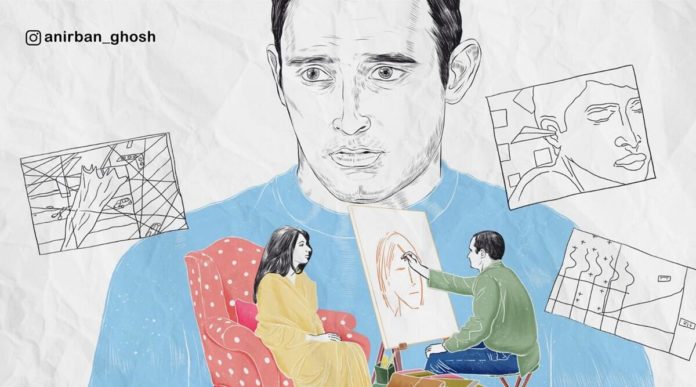
Twenty years ago, this day, Farhan Akhtar’s directorial debut, Dil Chahta Hai (DCH) released in India. It captured the imagination of a new and urban India – unapologetic of its ambitions and aspirations. It became a cult film that has been referenced innumerable times for its aesthetics, technical excellence and most importantly, the nuances of relationships that it celebrated. 20 years ago, in a middle-class home in Kolkata, this film spoke to a gay teenager like no other Hindi film did, even to this day. At the centre of this dialogue is one of DCH’s three protagonists: Siddharth Sinha (Sid), played by Akshaye Khanna.
Sid is an artist and his track is an accurate illustration of the ‘misfit’ that I was and the ‘closet’ that I found myself in. A closet may mean different things to different people. For some it is a terrifying place that stifles all forms of freedom. For me, in the absence of an inclusive space outside, it was a safe haven where I could observe and make sense of the world around me and express myself through my art. I always found myself immersed in art for as long as I can remember. I dabbled in painting, cartooning and telling stories with my drawings. In terms of temperament too, I didn’t relate to the boys I grew up with. Soon enough my art became a tool with which I could negotiate with the world. My teachers recognized this talent and encouraged me to diversify the ways of expressing myself – at first through my drawings, then through plays, elocutions, writing and illustrating for the school magazine.
In one of Dil Chahta Hai’s scenes, Sid’s mother (played by Suhasini Mulay) reminds Sid to come to Anju’s wedding anniversary. Sid replies, “Ma, main wahan bohot bore hota hoon (I feel very bored there),” to which his mother responds, “Duniya mein bohot kam jagah hai jahan tum bore nahi hote (there are very few places in the world where you don’t get bored).” “Theek hai, matt aao (It’s fine, don’t come),” she adds. Oh how torturous these social gatherings can be for a person like him and how liberating is the acceptance of his mother who gives up and ‘let’s him be’!
We ‘misfits’ always craved this shielding from what seemed like a banal world of grown-ups. Thankfully, my parents too came to my rescue every time a family friend brought up the topic of sports and told me how famous my father was in our mohalla for his game of cricket and football and then turned to me to ask if I played as well. “He’s more into art,” my father would reply before showing them my sketchbooks. These sketchbooks were my closet which people skimmed through but very few really saw what was hidden.
Sid’s closet too was waiting to be discovered by Tara (Dimple Kapadia). As her glance moved from one canvas to another, Sid’s eyes narrowed, trying to gauge what she was discovering about him. And the following set of dialogues confirms that she’s recognized the leitmotif in his paintings and peeked into his soul.
“Is mein bhi wahi baat (The same thing here too),” observes Tara. “Kaunsi baat (Which thing)?” enquires Sid. “Aaj maine tumhare baare kuch jaana hai (I’ve learnt something about you),” starts Tara. She analyses how Sid’s paintings reflect his inner world that he doesn’t share with anyone, not even with his closest friends.
Tara’s analysis of Sid is astute. We have seen earlier how at the disco Sid is physically present but absorbed in sketching portraits of people on paper napkins. When he meets Tara for the first time, he decides to wait and watch, even when she says she doesn’t need any help. On their Goa trip, Sid sees Dipa’s one-sided love for Akash heading nowhere and decides to find the right moment to sit next to her and help her “see” things more clearly. Sid observes his surroundings, reflects deeply and is naturally full of empathy – all the right ingredients that make a true artist.
And for an artist like Sid, Tara is the perfect muse. In our lives too, we have found and lost Tara. In W.S Maugham’s words, “the love that lasts longest is the love that is never returned” and Tara symbolizes that unrequited love. With the film’s script running in mind, I noticed how my English teacher, in her 40s, spoke about all forms of love – even the forbidden ones. We established a strong friendship and we’d write letters to each other in the old-fashioned way. I felt she truly understood me and that fuelled my creativity and set me free.
I also learnt the art of being pragmatic from Sid. He is aware that his immediate surroundings will not understand him. After celebrating Tara’s birthday, an emotional Sid, as if speaking to himself, reveals to Akash and Sameer that he loves Tara. The situation escalates quickly and as expected, his friends are unable to see the world as he does. This was a ‘coming out’ that didn’t go well. I saw this scene as a perfect parallel to my attempts to come out to my friends. Sid and I both had our truths that went against the grain: him falling in love with an older woman and I trying to come out as gay. The world around us was simply not ready to accept us for who we loved and who we were.
The face-off between Sid and Akash is heart-breaking yet it triggers Akash’s transformation that will be furthered on by Shalini later in the film. So far Akash’s character was the farthest from Sid in terms of maturity. We all know men like him who’d drop a line like “Mard bann! Be a man!” They would perpetuate the stereotypes of masculinity and not think twice before accosting a woman and professing their love. However, they are capable of change. While leaving for Sydney, at the airport, Akash tells Sameer that he always made fun of Sameer’s romances and never cared about how he’d feel. This recognition of past mistakes by Akash and looking at life and love differently were set in motion through the conflict with Sid. In my life too I’ve had tumultuous equations with friends who were uncomfortable with my truth. They called it a “phase that will pass” and pushed me back into the closet. It was not until their own journeys taught them better that they came around, apologized and we found closure.
In another beautiful scene, Sid confesses his feelings for Tara to his mother. At first, he tries his best to escape the interrogation but his mother, like most of our Indian mothers, is relentless. If you look carefully at the scene, you’ll find how it begins as a safe space – Sid is reclining, reading a book and his mother is massaging his feet. There is a definite comfort and intimacy but that gets increasingly tense till they start screaming at each other. In this what stands out is Sid’s clarity and courage to stand up for his truth. He feels no guilt or shame and is “not sorry for that (loving Tara)”. That as a teenager and later as a young adult was inspiring!
The aftermath of the confrontation is gentle and provides the much-needed healing. Sid comes and sits at his mother’s feet, who is looking up at the skylight, teary-eyed. He asks if she will join him on a trip. She nods and hugs him. Such a delicate handling of real confrontations especially with our loved ones is rare in Hindi cinema. Replace the receiver of Sid’s love with a same-sex lover and every emotion and reaction is still relevant. I’ve found my mother struggling with my truth – at first through arguments, and then later silently on her own and it always felt like a déjà vu induced by DCH.
With all its layering, the only aspect that sticks out is the maker’s attempt to give a conventional closure to Sid’s character arc. There is a hint of a romance with a younger woman towards the end of the film, as if to establish that Sid is “normal”.
We live vicariously through our cinema. Even without applying a queer theory lens, one can’t miss the tropes of unconventional forms of love in DCH. For decades, queer representation in our films was reduced to caricatures. The films with the right intent too ended up being tragic and uninteresting. As a result, we sought queer expression from the mainstream. From Sridevi’s costumes inspiring the drag-culture in India to the over-the-top, jatra-ish dialogues from Bhansali’s Devdas becoming the fun lingo for us queers, there is no predicting how films will be appropriated by popular culture.
Literary theorists argue how authors have no sovereignty over their creations and it’s through the ‘birth of the reader’ who interprets the text that new symbolisms come alive. For me the same happened with Dil Chahta Hai and for my generation that was starved of nuanced representation, it became a ‘breath of fresh air’- also for reasons that the makers perhaps did not set out to create.
Anirban Ghosh is an artist and designer currently based in Berlin.








